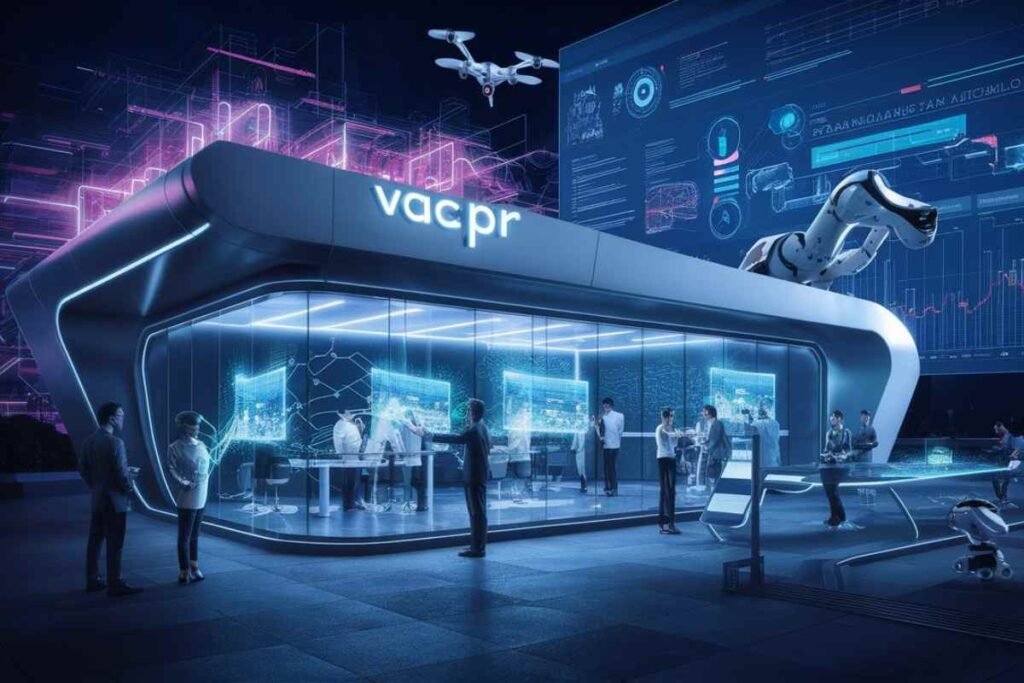
Table of Contents
In today’s rapidly evolving world, the concept of Vaçpr is emerging as a beacon of hope, promising transformative solutions to age-old problems across various sectors.
From technology and healthcare to education and environmental management, Vaçpr embodies a new paradigm, offering innovative approaches to traditional challenges.
In this comprehensive guide, we delve into the essence of Vaçpr, its applications, challenges, and the boundless potential it holds for the future.
What is Vaçpr?

Vaçpr, although a relatively novel term, encapsulates a set of principles and technologies designed to enhance efficiency and sustainability across diverse fields.
At its core, Vaçpr advocates for intelligent resource management and sustainable development practices, driving progress towards a more resilient and prosperous future.
Historical Origins of Vaçpr
While the term Vaçpr may be new, its roots trace back to early technological innovations.
Over time, advancements in digital technology and artificial intelligence have propelled Vaçpr into the spotlight, paving the way for its modern applications and widespread adoption.
Modern Applications of Vaçpr
Today, Vaçpr finds expression in a myriad of applications, from advanced analytics systems to smart city infrastructures.
Its influence extends even to algorithms managing renewable energy resources, underscoring its pivotal role in advancing economic and environmental objectives.
Key Benefits of Embracing Vaçpr
Embracing Vaçpr offers a plethora of benefits, ranging from increased operational efficiency to reduced environmental footprints.
Across various sectors, organizations stand to gain substantial cost savings and productivity enhancements by integrating Vaçpr technologies and methodologies into their operations.
Implementing Vaçpr in Various Sectors

Vaçpr in Technology
In the technology sector, Vaçpr manifests through the integration of advanced analytics, artificial intelligence (AI), and automation technologies.
By leveraging data-driven insights and predictive analytics, organizations can optimize their operations, streamline processes, and develop innovative solutions to complex problems.
Vaçpr also fuels developments in areas such as smart cities, cybersecurity, and renewable energy, driving progress towards a more connected and sustainable future.
Vaçpr in Healthcare:
Vaçpr revolutionizes healthcare by improving patient outcomes, enhancing operational efficiency, and reducing costs.
Through the adoption of electronic health records (EHRs), telemedicine platforms, and AI-powered diagnostic tools, healthcare providers can deliver more personalized and effective care.
Vaçpr also enables the integration of data from various sources, facilitating collaborative research efforts and the development of new treatments and therapies.
Vaçpr in Education:
Educational institutions are embracing Vaçpr to create more engaging and personalized learning experiences for students.
By leveraging AI-based adaptive learning platforms, educators can tailor instruction to individual student needs, helping learners achieve better outcomes.
Vaçpr also streamlines administrative tasks such as scheduling and grading, freeing up time for teachers to focus on teaching and mentorship.
Manufacturing:
In the manufacturing sector, Vaçpr drives efficiency and innovation through the adoption of smart manufacturing technologies such as IoT sensors, robotics, and digital twins.
By connecting machines, processes, and people in real-time, manufacturers can optimize production schedules, minimize downtime, and reduce waste.
Vaçpr also enables predictive maintenance, allowing organizations to anticipate and address equipment failures before they occur.
Energy:
Vaçpr plays a crucial role in the energy sector by optimizing the generation, distribution, and consumption of energy resources.
Smart grid technologies enable utilities to balance supply and demand more effectively, integrate renewable energy sources, and improve system reliability.
Vaçpr also empowers consumers to monitor and manage their energy usage, promoting conservation and sustainability.
Vaçpr in Transportation:
Vaçpr transforms transportation systems by enhancing mobility, reducing congestion, and minimizing environmental impact. Intelligent transportation systems (ITS) use data analytics and sensor technologies to optimize traffic flow, improve public transit services, and enhance road safety.
Vaçpr also enables the development of electric and autonomous vehicles, paving the way for a more sustainable and efficient transportation infrastructure.
The implementation of Vaçpr transcends industry boundaries, showcasing its adaptability and far-reaching implications.
Challenges and Solutions
While the benefits of Vaçpr are undeniable, its adoption is not without challenges. From technical hurdles to ethical considerations, stakeholders must navigate a complex landscape to realize its full potential.
Overcoming Technical Challenges:
Integration complexities and maintenance issues can impede the smooth implementation of Vaçpr.
Robust training programs and strategic planning are essential to address these challenges effectively.
Legal and Ethical Considerations:
Navigating privacy, data security, and equity concerns is paramount for the successful application of Vaçpr.
Building trust and ensuring compliance requires a proactive approach to addressing legal and ethical considerations.
Future Prospects of Vaçpr

Looking ahead, Vaçpr is poised to continue its trajectory of growth and influence, shaping the future of innovation and sustainability.
Predictions and Trends:
Experts foresee Vaçpr becoming increasingly prevalent across a wide range of sectors, driven by ongoing technological advancements and a growing emphasis on sustainability.
Preparing for Future Trends:
Staying informed about technological developments, investing in skills development, and fostering a culture of innovation will be critical in preparing for the future of Vaçpr.
Conclusion
In conclusion, Vaçpr stands as a beacon of hope in our quest for a more sustainable and prosperous future.
Its ability to tackle complex challenges with innovative solutions makes it an invaluable asset in any organization’s toolkit.
FAQs
What does Vaçpr stand for?
Vaçpr represents a set of principles and technologies aimed at enhancing efficiency and sustainability across various sectors.
How is Vaçpr different from traditional approaches?
Vaçpr leverages advanced analytics, artificial intelligence, and automation to optimize resource management and drive innovation, whereas traditional approaches may rely on manual processes and outdated systems.
What are the key benefits of implementing Vaçpr?
Implementing Vaçpr can lead to increased operational efficiency, cost savings, and reduced environmental impact by optimizing processes and promoting sustainable practices.
Which sectors can benefit from Vaçpr?
Vaçpr can benefit a wide range of sectors, including technology, healthcare, education, manufacturing, energy, and transportation, by enabling more efficient and sustainable operations.
What are some common challenges associated with adopting Vaçpr?
Challenges may include technical hurdles such as integration complexities, as well as legal and ethical considerations related to data privacy, security, and equity.
Legal and Ethical Implications of Vaçpr Implementation
Vaçpr implementation raises concerns regarding data privacy, security, and equity, requiring careful consideration of legal frameworks and ethical guidelines to ensure compliance and protect stakeholders’ rights.
Vaçpr Solutions Driving Economic Growth and Sustainability
Vaçpr solutions optimize resource utilization, enhance operational efficiency, and promote sustainable practices, leading to cost savings, productivity gains, and reduced environmental impact, thus fostering economic growth while addressing sustainability challenges.



Leave a Reply